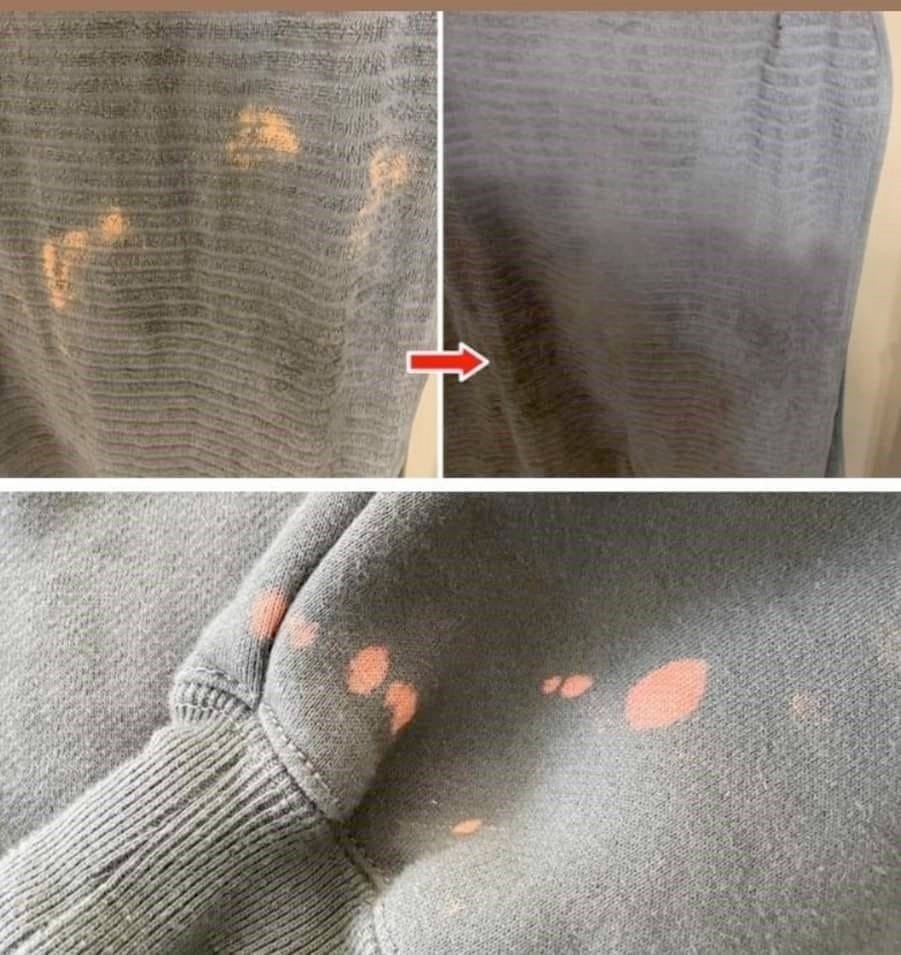ADVERTISEMENT
Steps:
- Choose the Right Fabric Dye: Pick a fabric dye that matches the color of the material you want to fix. If you’re working with white clothing that’s turned yellow or has developed bleach spots, a fabric dye can restore the color.
- Prepare the Dye: Follow the instructions on the fabric dye packaging for the correct water-to-dye ratio. Typically, you’ll dissolve the dye in hot water, but the exact method may vary based on the brand.
- Submerge the Fabric: Immerse the item with the bleach stain into the dye mixture, ensuring it is completely soaked. Depending on the intensity of the stain and the color you want to achieve, you may need to leave it submerged for a few minutes or longer.
- Rinse and Dry: After achieving the desired color, rinse the fabric under cold water until the water runs clear. Then, allow it to air dry or follow any drying instructions provided with the fabric dye.
Why It Works: This technique is a great way to cover up bleach stains, especially on items like clothing, towels, and bedding. The fabric dye helps restore the uniformity of the material, essentially “erasing” the bleach stain by dyeing the affected area. It’s perfect for larger bleach spots that can’t be fixed by other methods.
2. Use a Bleach Stain Remover or Oxidizing Agent
If you want to tackle bleach stains without changing the color of your fabric, using a bleach stain remover or an oxidizing agent might be the solution. These products are designed to break down the chemicals left by bleach, helping to lift or neutralize the stain.
What You’ll Need:
- Oxygen bleach (e.g., OxiClean)
- White vinegar or hydrogen peroxide
- Water
- Soft cloth or sponge
Steps:
- Mix the Solution: If you’re using oxygen bleach, follow the instructions on the package to mix the correct amount with warm water. If you’re using vinegar or hydrogen peroxide, mix one part of either substance with two parts water to create a diluted solution.
- Test the Solution: Before applying the mixture to the stained area, always test it on a small, inconspicuous part of the fabric to ensure it doesn’t cause any further damage or discoloration.
- Apply the Solution: Soak a soft cloth or sponge in the solution and gently blot the bleach stain. Be careful not to rub the stain, as this could make it spread or worsen. You want to lift and neutralize the bleach marks without aggravating the damage.
- Rinse and Dry: Once the stain has been treated, rinse the fabric thoroughly with cold water to remove any residual cleaning solution. Then, let the item air dry.
Why It Works: The oxygen bleach or oxidizing agent works by reacting with the bleach stain to neutralize it. These products are effective at breaking down the harsh chemicals from bleach and can restore the material to its original look without changing its color. Vinegar and hydrogen peroxide both help to lift and neutralize the bleach, making them an affordable and natural option for cleaning.
Additional Tips for Preventing Bleach Stains:
- Be Mindful of Bleach Usage: Always be cautious when handling bleach, especially on fabrics and surfaces that can easily absorb it. Wear gloves to avoid direct contact, and always dilute bleach when necessary.
- Act Quickly: The faster you can treat a bleach stain, the better the chances of minimizing the damage. Once bleach starts to alter the fabric’s fibers, it’s harder to reverse.
- Protect Surfaces: When cleaning, consider using protective layers (like old towels or cloths) to protect your floors or furniture from accidental spills.
Final Thoughts:
Bleach stains don’t have to be the end of your favorite clothing item or cherished fabric. Whether you choose to dye the fabric back to its original color or use a stain remover to neutralize the bleach, these techniques can help restore your belongings and keep them looking fresh. With a little effort and the right tools, you can prevent bleach stains from ruining your fabrics and get back to enjoying your clean and beautiful items!
